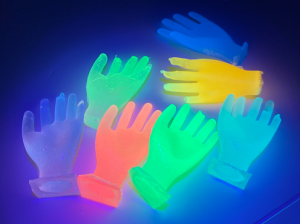Noah Kernis
SELF REINFORCEMENT is a piece exploring the relationship between HUMANS, COMPUTERS, and how they “see” and interact with each other
https://blog.noahkernis.com/posts/itp/fall_2019/intro_phys_comp/07_self_reinforcement/
Description
SELF REINFORCEMENT explores the relationship between HUMANS, COMPUTERS, and how they “see” and interact with each other.
The piece allows for a HUMAN to work with a COMPUTER to create a HUMAN-like form using the video feed from multiple cameras observing the gallery crowd. The video feed is processed in real time by the BodyPix Tenserflow.js library to isolate body parts.
A HUMAN, via a control box, can assign the feed from any of the video feeds, to a body part. The result is a body-collage that may have many heads, torsos, and so on. The HUMAN and COMPUTER work together to create a representation of a person. Both the strengths and biases of each are combined to create the final representation.
Classes
Introduction to Physical Computing











